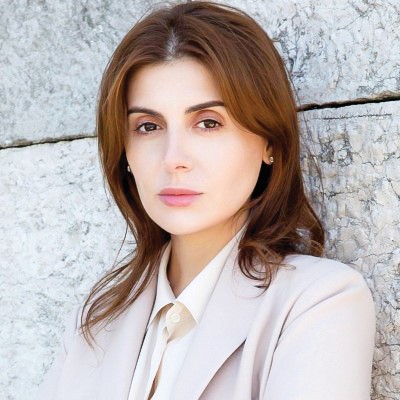TASHKENT: Gayane Umarova is the face of a new Uzbekistan, harnessing creative and culture industries to carve its place under the global sun. The driving force behind the 4th World Conference on Creative Economy held in Tashkent early October, Ms Umarova, Executive Director, Uzbekistan Art and Culture Development Foundation, is buzzing with new ideas and initiatives to enhance creative economy collaboration with like-minded countries. In this interview with Manish Chand, Ms Umarova shares her vision of the growth of culture industries in Uzbekistan and hails India as a global leader in creative economy.
Q: How do you view Uzbekistan’s emergence as a hub of creative economy? What are prospects for the expansion of the cultural industry in Uzbekistan?
A: The 4th World Conference on Creative Economy showed vividly how Uzbekistan is progressing in this field. Uzbekistan Art and Culture Development Foundation was established seven years ago, and since then, we have seen the creative economy grow. Uzbekistan has always had a rich heritage of craftsmanship, but for a long time, it wasn’t monetized beyond attracting tourists. We soon realized that we needed new museums, infrastructure, and contemporary art spaces. Additionally, we needed to invest in education and capacity building, which would lead to economic growth by creating employment. We recently launched a new legal framework that allows us to officially recognize the creative industries and work on tax incentives and licensing — crucial steps for the development of this sector.
Q: What steps have been taken to promote the cultural industries?
A: We have engaged in numerous international exhibitions, starting with one in Paris in 2022, followed by another at the James Simon Galerie in Berlin. Recently, we opened an exhibition at the British Museum in London. These exhibitions represent significant progress. With each event, we invest in training people in restoration and conservation, especially when working with heritage pieces from the 7th to 15th centuries. We also educate people to engage audiences and foster cultural exchange. One of our major upcoming projects is building a museum with renowned Japanese architect Tadao Ando. By the time our collection finishes touring the world, it will have a permanent home in Uzbekistan.
India-Uzbek Connect
Q: India has one of the largest creative economy sectors in the world, especially in film production. Bollywood is quite popular in Uzbekistan. How do you see collaboration between India and Uzbekistan in the creative economy? How do you view India’s role in this sector?
A: During the Soviet era, Uzbekistan had strong cultural ties with India, particularly through Bollywood, and this has continued over the years. A lot of films were produced for this region, and there were frequent exchanges between actors. Bollywood remains very popular here, even though the way we consume media has changed with the internet. Currently, the governments of Uzbekistan and India are collaborating closely in the film industry. There’s an award ceremony planned in Samarkand next year that will come from India. India is truly a global leader in the creative economy. During my visit to the Chanakya International Center in Mumbai last month, I was amazed by how they have integrated traditional craftsmanship into design and fashion. Uzbekistan can certainly learn from India’s experience. We hope to see more collaboration with India at future conferences on creative economy.
Q: When one moves around in Tashkent and Samarkand, one can sense a lot of goodwill and affection for India here. In light of your recent visit to India, how do you think India and Uzbekistan can further enhance cultural collaboration?
A: We share a rich historical connection through the Mughal Empire, which is evident in the Humayun Tomb and other monuments in India. Currently, we’re collaborating with the Aga Khan Foundation, which was involved in restoring the Humayun Tomb. They will now work with us on restoring the Timurid Gardens in Samarkand. This collaboration will also include experts from India. The historical and cultural ties between our countries remain strong, and we’re eager to bring more exhibitions to both Uzbekistan and India.
Q: How is the art scene shaping in Uzbekistan? Are there any plans to promote Uzbek art globally?
A: The art scene in Uzbekistan is growing. We’re opening new art residences in Tashkent’s old city, which we hope will nurture new artists. The program will be international, encouraging both local and global artists to collaborate. Next year, in September, we’re launching the Bukhara Biennial, which will focus on arts, crafts, music, food, and architecture. We’re not yet as strong in contemporary art, but we’re working on creating multidisciplinary platforms that bring together different sectors of the creative economy.
Q: In today’s world of conflicts and divisions, how do you see the role of the creative economy and art in promoting unity and healing?
A: Art has always been a form of therapy. When people engage with art, their emotions and perspectives shift. In these times of division, we need that therapeutic effect more than ever.
Manish Chand, is CEO, Centre for Global India Insights, a think tank focused on global affairs, and Editor-in-Chief, India Writes Network and India and the World.

